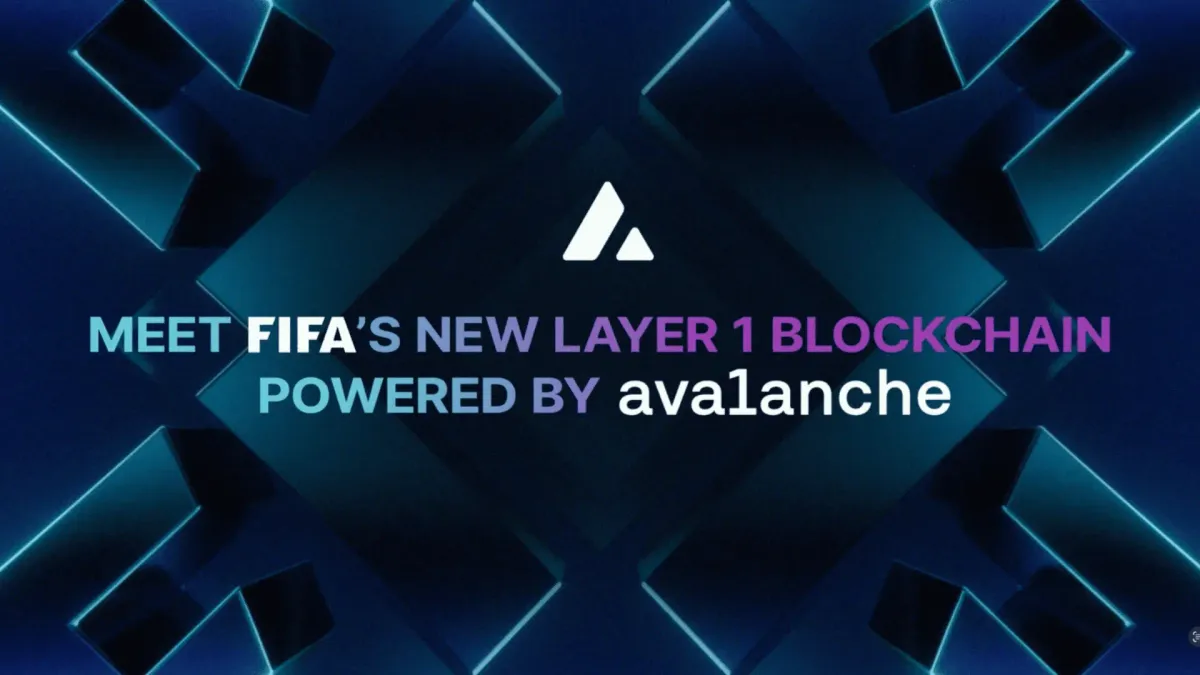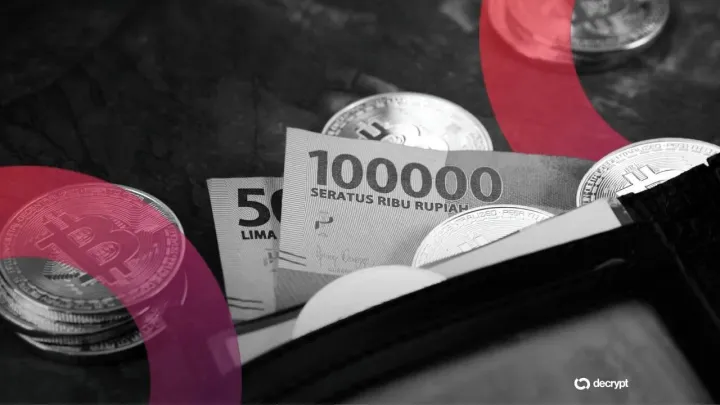FIFA Partners with Avalanche to Launch Custom Blockchain: A New Era for Fan Engagement

On May 22, 2025, the Fédération Internationale de Football Association (FIFA), the world’s governing body of football, announced a groundbreaking partnership with Avalanche, a high-performance Layer-1 blockchain platform, to develop a custom blockchain network dubbed the “FIFA Blockchain.” This strategic move marks a significant shift in FIFA’s Web3 strategy, as the organization pivots from its prior collaboration with Algorand to a more scalable and customizable infrastructure. The dedicated FIFA Blockchain, built as an Avalanche subnet (a sovereign Avalanche-based network), is poised to enhance fan engagement through digital collectibles, ticketing, and other immersive experiences, leveraging Avalanche’s technology to support a global audience of over five billion football fans. FIFA’s decision to build on Avalanche ends its earlier partnership with Algorand, which had powered the FIFA+ Collect NFT platform during the 2022 World Cup. By migrating to Avalanche, FIFA seeks greater transaction throughput, lower fees, and broader compatibility with the Ethereum ecosystem (via Avalanche’s EVM support). This article explores the details of the FIFA-Avalanche partnership, the purpose and design of the custom FIFA Blockchain subnet, its implications for mainstream adoption of blockchain in sports, and why Avalanche was chosen over alternative networks.
FIFA’s New Blockchain Strategy and Avalanche Subnet
The FIFA-Avalanche Partnership represents a strategic pivot aimed at unifying FIFA’s digital offerings under one robust platform. Avalanche’s architecture allows FIFA to launch a bespoke Layer-1 chain (subnet) that FIFA fully controls, rather than relying on a shared public network. The FIFA Blockchain will initially serve as the new home for FIFA’s existing NFT ecosystem. Notably, all FIFA Collect digital collectibles – highlights and memorabilia that were previously issued on Algorand (and partly on Polygon) – are being migrated to the Avalanche-based chain. Users will receive step-by-step instructions to transition their assets and wallets, ensuring a smooth migration without losing ownership. By housing collectibles on its own Avalanche subnet, FIFA can guarantee sub-second transaction finality and minimal fees, which are crucial during peak events like World Cup ticket drops or live digital collectible releases. The new subnet also enables seamless integration with popular Ethereum-compatible wallets (since Avalanche subnets can be EVM-compatible), expanding access for fans. Beyond NFTs, FIFA has hinted at broader applications for its blockchain. Future uses may include tokenized ticketing (secure, transferable match tickets on-chain), merchandise authentication, and even a native digital currency. In fact, FIFA President Gianni Infantino floated the idea of a “FIFA Coin” during a March 2025 tech roundtable, suggesting a potential token to facilitate fan transactions and rewards in this ecosystem. Such a token could let fans purchase match tickets, team merchandise, or exclusive content directly on the blockchain, creating a self-contained digital economy for football enthusiasts. While details remain speculative, the Avalanche partnership lays the foundation for these innovations by providing a scalable and interoperable network to build on. From a technical standpoint, Avalanche offers enterprise-grade performance that aligns with FIFA’s needs. According to Ava Labs (Avalanche’s development team), the Avalanche network can handle over 6,500 transactions per second and is built for high throughput with sub-second confirmation times. This capacity is essential for serving millions of users concurrently during global tournaments. The Avalanche subnet infrastructure also grants FIFA full governance control over its chain’s parameters (such as who can validate it, what fees are, etc.), allowing customization for security and compliance. By contrast, sticking with a general-purpose chain might not offer the same level of control or guaranteed performance during traffic spikes.
Why Avalanche Was Chosen Over Other Networks
In choosing Avalanche, FIFA evaluated several factors to justify not only ending its Algorand partnership but also opting against other prominent chains. Scalability and speed were paramount considerations. While Algorand provided a secure platform, Avalanche’s subnet offers a dedicated network with higher throughput and no contention from unrelated apps. Avalanche’s consensus protocol (based on directed acyclic graph architecture) is known for its fast finality and has been battle-tested for DeFi and enterprise use cases. This means even during a World Cup finals ticket sale or a viral NFT moment, the FIFA Blockchain can remain responsive. Another decisive factor was EVM compatibility and developer ecosystem. Avalanche subnets can run an Ethereum Virtual Machine, meaning Solidity-based smart contracts and Ethereum developer tools work out-of-the-box. This opens the door for FIFA to easily collaborate with a vast pool of Web3 developers and to integrate existing Ethereum-based NFTs or DeFi applications into its platform. Competing chains like Solana or Flow, while performant, have unique programming environments that are less familiar to the broader developer community. By aligning with Avalanche, FIFA taps into the Ethereum world’s network effects (wallets, libraries, NFTs standards like ERC-721) with far less friction for users. Indeed, the move to Avalanche immediately unlocks compatibility with popular wallets like MetaMask, in contrast to Algorand which required proprietary wallets (now to be deprecated for FIFA’s uses). Customizability and governance also played a role. FIFA was not interested in a one-size-fits-all public blockchain; it wanted a say in how the blockchain evolves. Avalanche’s subnet design allows FIFA to have its own set of validators (potentially vetted entities) and to adjust parameters to fit regulatory or operational needs. This level of control is something not offered on Ethereum mainnet or many Layer-2 networks. Other enterprise-focused chains could offer control but at the cost of being siloed; Avalanche subnets, however, remain interoperable with the wider Avalanche ecosystem and can even interact with Ethereum assets, giving the best of both worlds (sovereignty plus connectivity). Finally, reliability and partnership support were likely factors. Avalanche, through the Avalanche Foundation and Ava Labs, has actively cultivated enterprise partnerships. Reports indicate that Avalanche and its partners (such as Modex, a Web3 solutions company assisting FIFA) worked closely with FIFA in a rigorous analysis of technical requirements. Performance, security, fees, and scalability were evaluated, and Avalanche’s solution aligned best with FIFA’s long-term vision. The presence of a dedicated support ecosystem (including Avalanche’s AvaCloud service for launching blockchains and a history of collaborations in sports and gaming) may have given FIFA confidence that Avalanche can execute on this large-scale project. By contrast, some other chains have faced recent technical outages or uncertainty that FIFA was keen to avoid for a mission-critical fan platform.
Implications for Mainstream Blockchain Adoption
FIFA’s embrace of its own blockchain is a milestone for mainstream adoption of crypto technology. As one of the most recognized global brands with an enormous fanbase, FIFA’s move signals that blockchain is moving beyond niche crypto collectibles into the core of large-scale fan engagement strategies. This could onboard millions of non-crypto users into interacting with blockchain without them even realizing it – for example, fans might buy a digital World Cup ticket or a collectible by simply clicking through FIFA’s app, with an Avalanche wallet working behind the scenes. If executed successfully, the FIFA Blockchain can serve as a case study of how blockchain adds value in the sports industry: by providing verifiable digital ownership of collectibles, reducing fraud in ticketing, and enabling new forms of fan participation (like voting on certain awards or unlocking VIP experiences via token ownership). The partnership also reflects a maturation in how institutions approach Web3. Unlike the speculative NFT boom of 2021-2022 where many brands launched one-off NFT drops, FIFA is focusing on building infrastructure and utility. By investing in a long-term platform, FIFA is treating blockchain as a core component of its digital strategy, not just a marketing gimmick. This could inspire other major sports organizations and entertainment franchises to consider similar moves. In the coming years, we might see leagues like the NFL, NBA, or Olympics organizations explore dedicated blockchains or subnetworks tailored to their fans, especially if FIFA’s model demonstrates improved fan engagement and new revenue streams. For the blockchain industry, FIFA’s vote of confidence in Avalanche technology is significant. It showcases that networks like Avalanche can meet stringent requirements of major enterprises. The immediate market reaction was telling: Avalanche’s native token AVAX saw a price surge of over 8% on the partnership news, with trading volumes spiking, reflecting investor optimism. Beyond price action, it validates Avalanche’s approach to scaling via subnets and could attract more institutional projects to consider Avalanche for custom chains. Competitor platforms will also take note – for instance, Algorand’s loss here underscores how competition for enterprise and government partnerships in blockchain is intensifying, pushing networks to continuously improve performance and support. From a user perspective, mainstream fans might initially interact with FIFA’s blockchain without needing deep crypto knowledge. Custodial wallets or easy email/password-based wallet solutions could be implemented to lower barriers. Over time, though, as fans become comfortable owning digital collectibles or tokens, this initiative could organically increase crypto literacy among the general public. Imagine football fans learning about securing their seed phrases because their match tickets are on-chain – a scenario that brings blockchain education to an entirely new demographic.
Conclusion
The FIFA–Avalanche partnership marks a pivotal moment in the convergence of sports and blockchain technology. By launching a custom Layer-1 blockchain on Avalanche, FIFA is not merely riding a trend but actively shaping a long-term digital ecosystem for football fandom. The choice of Avalanche was driven by practical needs – high throughput, low latency, cost-efficiency, and the flexibility to tailor the network – all of which Avalanche’s subnet architecture provides in a way that outpaced alternatives. In doing so, FIFA is setting a precedent: it demonstrates that mainstream institutions can leverage decentralized tech on their own terms. If successful, the FIFA Blockchain could become a blueprint for how to harness blockchain’s benefits (like transparency, security, and interoperability) while delivering a smooth user experience at scale. Fans may benefit from more secure ticketing, authentic memorabilia that they truly own, and interactive opportunities that were never before possible. For blockchain adoption, having billions of football fans potentially onboarded through FIFA’s platform could be transformative. It lowers the experiential gap between crypto and everyday life. The sports world often leads in embracing new tech for fan engagement (from instant replays to social media); now with blockchain, it may again catalyze wider adoption. Avalanche, on its part, stands to gain immense visibility and credibility by powering FIFA’s venture – a real-world validation of its technology’s strengths. As the FIFA Blockchain rolls out (with the migration of FIFA Collect already underway), all eyes will be on its performance in upcoming events. Success might encourage other organizations to follow suit, ushering in an era where custom blockchains for large communities (sports, music, gaming) become a norm. In summary, FIFA’s partnership with Avalanche is more than just a tech deal – it’s a bold step towards a future where mainstream audiences engage with blockchain-based experiences as seamlessly as they do with any online service, truly bridging the gap between legacy institutions and the decentralized world.


Comments ()